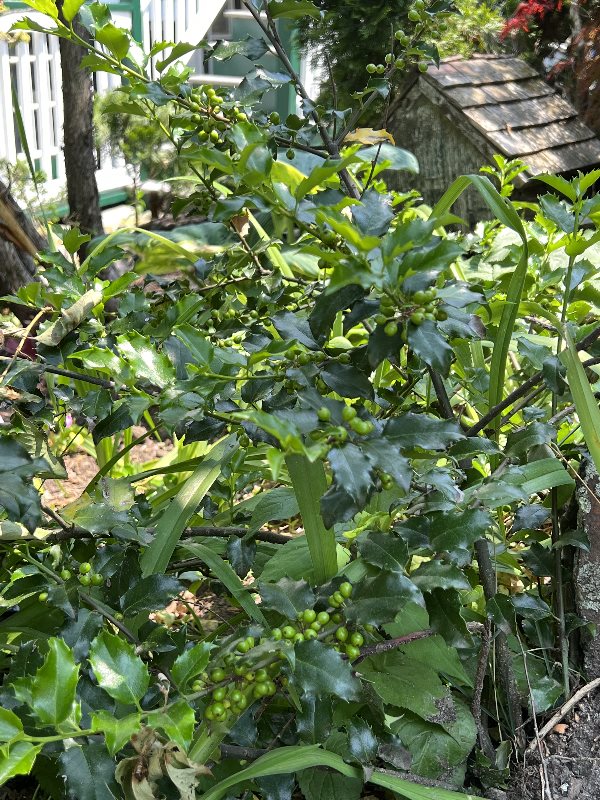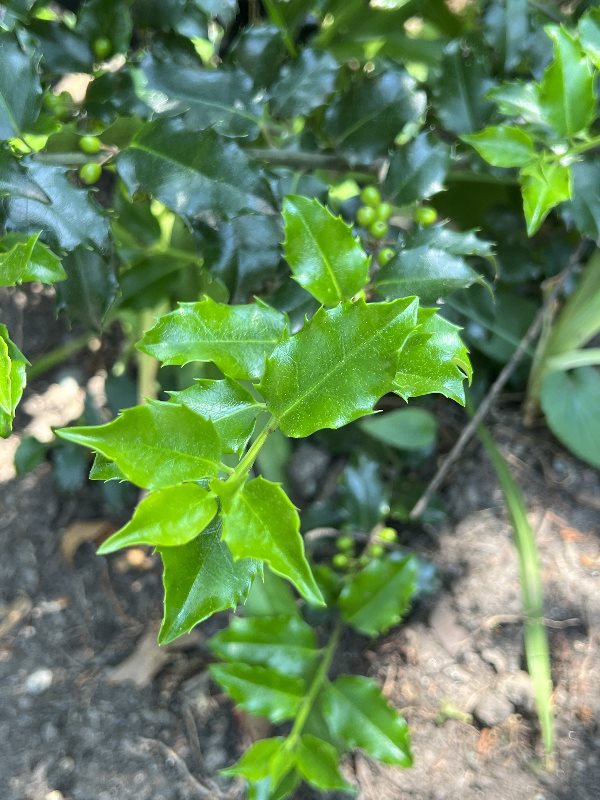
Ashley Davidoff TheCommonVein.net Our Garden’

Ashley Davidoff TheCommonVein.net Our Garden’
Common Holly (Ilex aquifolium) is an evergreen shrub or small tree native to Europe, including regions such as the British Isles. It is known for its glossy, spiky leaves, bright red berries, and its association with traditional holiday decorations. Here’s some information about Common Holly:
- Appearance: Common Holly has shiny, dark green leaves that are leathery and have a distinctive spiny or serrated edge. The leaves are typically oval or elliptical in shape and arranged alternately on the stems. Female plants produce vibrant red berries that ripen in the fall and persist throughout the winter. The berries are a favorite food source for birds. The plant can reach a height of 15 to 50 feet (4.5 to 15 meters) depending on growing conditions and pruning practices.
- Growing Conditions: Common Holly is adaptable to a variety of soil types but prefers well-draining soil. It can tolerate both full sun and partial shade, although it may have denser foliage and more berries in full sun. It is generally hardy in USDA hardiness zones 6 to 9. Common Holly is dioecious, which means it has separate male and female plants. Female plants produce the characteristic red berries, while male plants produce small, inconspicuous flowers.
- Protection: Common Holly is generally resistant to pests and diseases. However, it may occasionally be affected by pests like scale insects or diseases like leaf spot.
- Landscape Use: Common Holly is a popular choice for both ornamental and practical purposes in landscapes. Its dense foliage and vibrant berries make it a beautiful addition to gardens and provide year-round interest. It can be used as a specimen plant, in hedges, or as a privacy screen. The branches with berries are often cut and used in holiday decorations like wreaths and garlands.
Note: While the berries of Common Holly are attractive, they are toxic to humans and many animals. It is important to exercise caution and keep them out of reach of children and pets.
